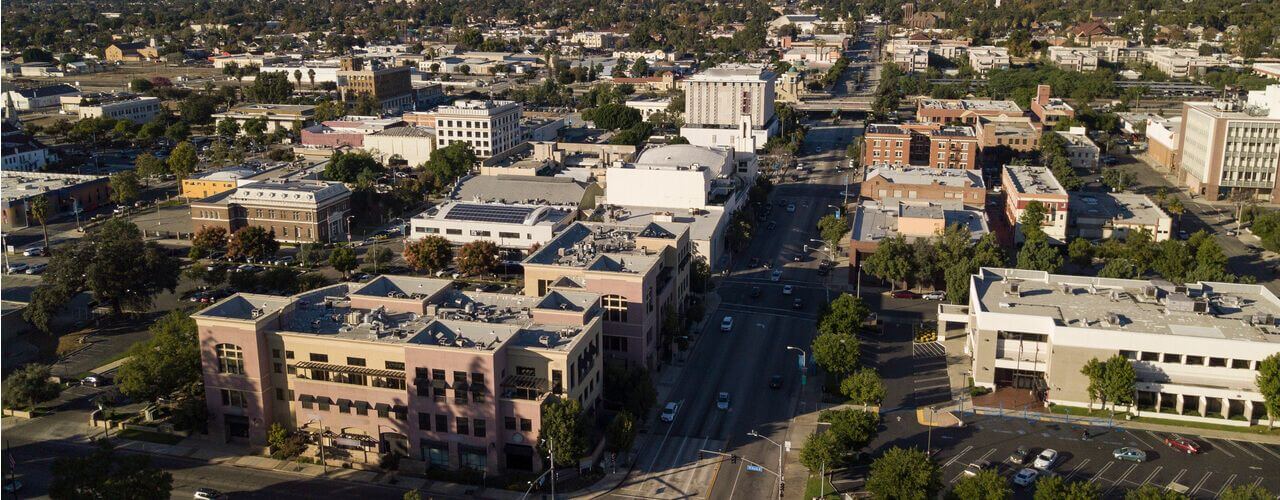
Anthony W. Orlando, Assistant Professor in Finance, Real Estate, and Law at Cal Poly Pomona
Today we bring you our interview with Anthony W. Orlando — Assistant Professor in the Finance, Real Estate, and Law Department at California State Polytechnic University, in Pomona. His research as Faculty Affiliate of the Bedrosian Center on Governance and the Public Enterprise at U.S.C. delves into subjects at the intersection of business and public policy. Trained as an applied microeconomist, he explores risks, returns, and optimal regulations in real estate markets in his work.
His 2013 book, which succinctly yet comprehensively analyzes the economic events of the past four decades, has been hailed as a “powerful, compact primer on American economics” that everyone should read. The podcast he produced and hosted, “Our American Discourse,” features conversations with “the smartest minds from the University of Southern California and beyond,” on themes that continue to be essential to the challenges of our time.
In his interview with us, Mr. Orlando shared his insights on the importance of actively including communities in the process of real estate development, as well as investment. What’s more, he makes the case for creativity and preparedness as essential to investment strategies which can weather economic storms even as powerful as what the COVID epidemic has brought to light.
Q: Could you start by telling us a little bit about your background and why you chose your career?
It was the Great Recession that did it. I watched my generation graduate into the worst job market in decades, and I never wanted another generation to have to go through it again. So I studied housing finance, and that led me to housing, and that led me to the rental affordability crisis, and that led me to commercial real estate. And now I’m watching the next generation going through a completely different crisis but at least this time I’m armed with some tools to help them.
Q: Considering the COVID-19 outbreak, what are your thoughts on the CRE market in the US today in terms of trends and challenges?
Crises reward the prepared and the creative. Firms that avoided high levels of debt and managed their cash well before the recession will find good deals if they look for them. We’ve seen significant price corrections in student housing, lodging and retail. Some of that is warranted — the pain is far from over in these sectors — and some is a result of financial distress.
A strategic buyer who’s willing to put in the time to reinvent these properties for the future could rebuild a lot of the value that’s been lost. Buyers are starting to come back to the market. They can smell the opportunity.
Q: What do you think differentiates the commercial real estate market in California from other major markets in the United States?
Jobs, regulations, and weather. We’re the fifth-largest economy in the world, partly because of population size, but also because there is so much innovation — and I don’t just mean in Silicon Valley. We have a world-class university system feeding right into cities like Los Angeles and Long Beach, with the busiest ports in the United States. If Asia is the future of the global economy, California is the gateway. It’s not a cheap place to do business. Plenty of investors complain about that. But it’s rewarding enough that there’s still a growing appetite to build and buy. Regulations and taxes may be costly, but they’re investments in the future just as much as commercial real estate.
We have some of the most popular conservation lands in the country, and we’re building two of the most ambitious light rail expansions in Los Angeles and in San Francisco. We’ve got a long way to go to solve the affordable housing crisis — especially the homelessness that results from it — but commercial real estate investors should see that as an opportunity, not as a drawback. This is a place where you can make a difference…in the sunshine year-round.
Q: How have you seen the industry evolve in the past years?
It’s definitely gotten more expensive. Land and construction costs have both gone up significantly in the major markets. In a lot of those markets, supply has been constrained. Regulations have played a role, but they’re not the only deterrent. Available lots are getting scarcer, and land assembly isn’t getting any easier.
There’s been some innovation — ADUs, modular construction, tiny homes — but it hasn’t been enough to meet the demand in most sectors. It’s pitting the industry against the community, and neither one is happy. The best CRE investors don’t just invest in buildings. They invest in communities. They invest in people. Until that attitude becomes more widespread, we’re going to continue to see resistance to development and revitalization.
Q: Where do you see it going in the future?
Cities are going to have to confront the affordability crisis. You can have an expensive city if you pay people to live there, or you can have an inexpensive city with plentiful real estate for everyone. But you can’t have an expensive city where no one can afford to live. At a certain point, it becomes unsustainable. A city can’t run on the richest “One Percent” alone.
The city of the future has to pick a strategy: either subsidize or build. The latter seems more politically palatable at the moment, especially as the recession drains state and local budgets. But even with upzoning, a lot of cities will find the problem doesn’t disappear. The built environment is a stubborn thing. That’s why we have to take care with the choices we make, for they last a long time. “We shape our buildings,” said Churchill, “thereafter they shape us.”
I’ve been doing research with my colleagues Brian An and Seva Rodnyansky on redlining — legal mortgage discrimination in the United States from the 1930s to the 1960s — and we’ve found that neighborhoods today still look the way they do because they were cemented in place by those policies back then. What kind of city do we want to bequeath to the next generation? In the wake of COVID-19, how can we make it healthier? In anticipation of climate change, how can we make it more environmentally sustainable? In the face of widespread injustice and inequity, how can we make it more inclusive?
The great innovators of commercial real estate will be the ones who can answer these questions and give shape to buildings that make us proud of the history they represent.
Q: Are there any lessons from the past few years that you would impart as an absolute must for those looking to get into the CRE industry?
Finance is essential, but local politics is a gamechanger. Know how to crunch the numbers, know how to negotiate a deal, and know how to syndicate the financing. You can’t make successful investments without those elements. But don’t stop there. One of the most successful CRE investors in Southern California once told me, “All of my competitors can write a pro forma. You know why I get the big deals and they don’t? I get the community on my side.”
Sooner or later, you’re going to run into opposition. When that day comes, you’re going to need to know how to talk to policymakers, planners, and community members, how to listen, how to navigate the regulatory system, how to expedite the process and anticipate their concerns and assuage them.
Q: What is your general assessment for the commercial real estate market in 2020? Have you spotted some interesting market trends, especially considering the current pandemic?
It’s going to be a varied experience. In 1918, the cities that took the strongest public health measures against the virus not only experienced lower death rates, but they experienced stronger economic growth for years thereafter. Public health and economic health are intertwined.
Just because cities like Los Angeles took strong early action to shut down their economies, don’t think they’re going to be bad places to invest in the years to come. On the contrary, the weakest markets are likely to be the ones that don’t take the proper precautions and that had the highest public health risks to begin with. And just because the virus is spread by human contact, don’t expect people to flee the cities either. New York aside, the biggest hotspots in the country have not been the biggest cities. Long-term success is about more than just who gets hit first or even who gets hit hardest. It’s about resilience: who has the resources to survive, to thrive, to rebuild, to adapt, and to innovate.
Cities were built for exactly those reasons — and that’s why, so far, listing sites are showing people are still looking for housing in the big ones. They may be looking for more affordable options for a while, though, so consider what kind of rental concessions, pricing strategies, product mixes, and other tactics you can use to attract and retain tenants in this weak environment.
My latest research with a team of researchers shows, for example, that small- to medium-sized multifamily properties (housing of two to 49 units) are often an especially affordable option for low- to moderate-income tenants, and come at a corresponding discount for investors to buy. The more we can identify those kinds of opportunities, the more our industry will be able to meet this unprecedented moment.
Interested in being interviewed for our Expert Insights series? Feel free to reach out to us at [email protected]! Check out other articles from our series here.









